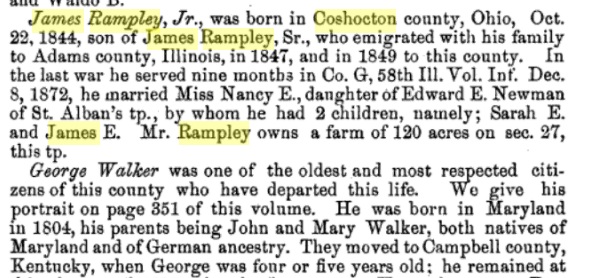Information from those “county mug books” published in the United States in the late 19th century typically came from the biographee or their family. Sources were not checked and information was not validated. This does not mean that it is incorrect, but it does mean that the researcher should try and validate the information with other sources.
The biography is a derivative source for the information it contains because it is a compilation from a variety of sources–most likely the family Bible, other records the family may have had in their possession, and memories. Where the family got the information cannot be determined from the biography itself.

The best way to use the biography is as a springboard to additional research. One approach is to create a chronology of every event listed or suggested in the biography and a map of every location mentioned. Records can be searched based on the chronology and the map provides geographic perspective.
Get Genealogy Tip of the Day–the book– today!








2 Responses
These often contain glowing testimonials of the character and accomplishments of the person. Sometimes they are factual. Sometimes there are enough true facts that you have clues to research.
Very true. Like most material of this type–use as a springboard to other sources.